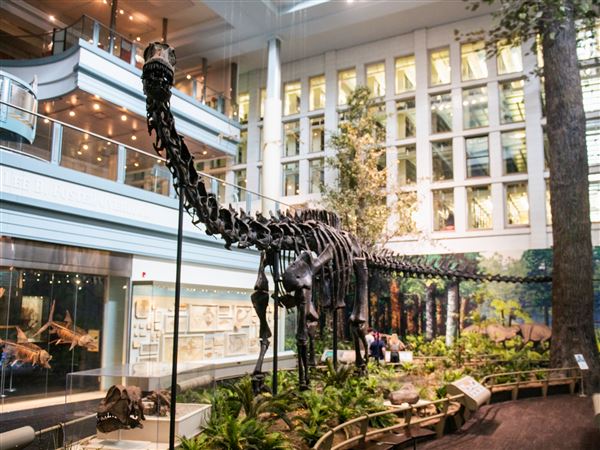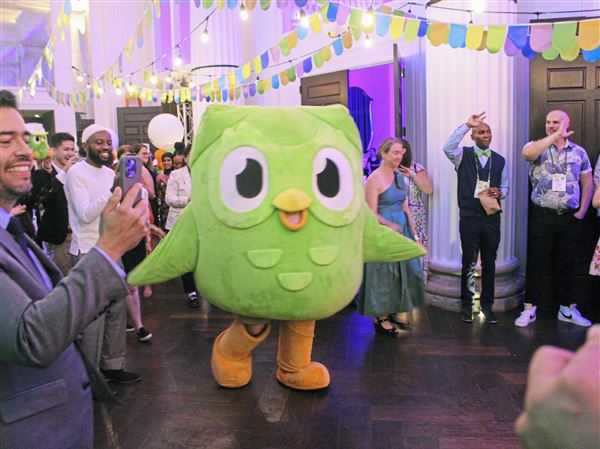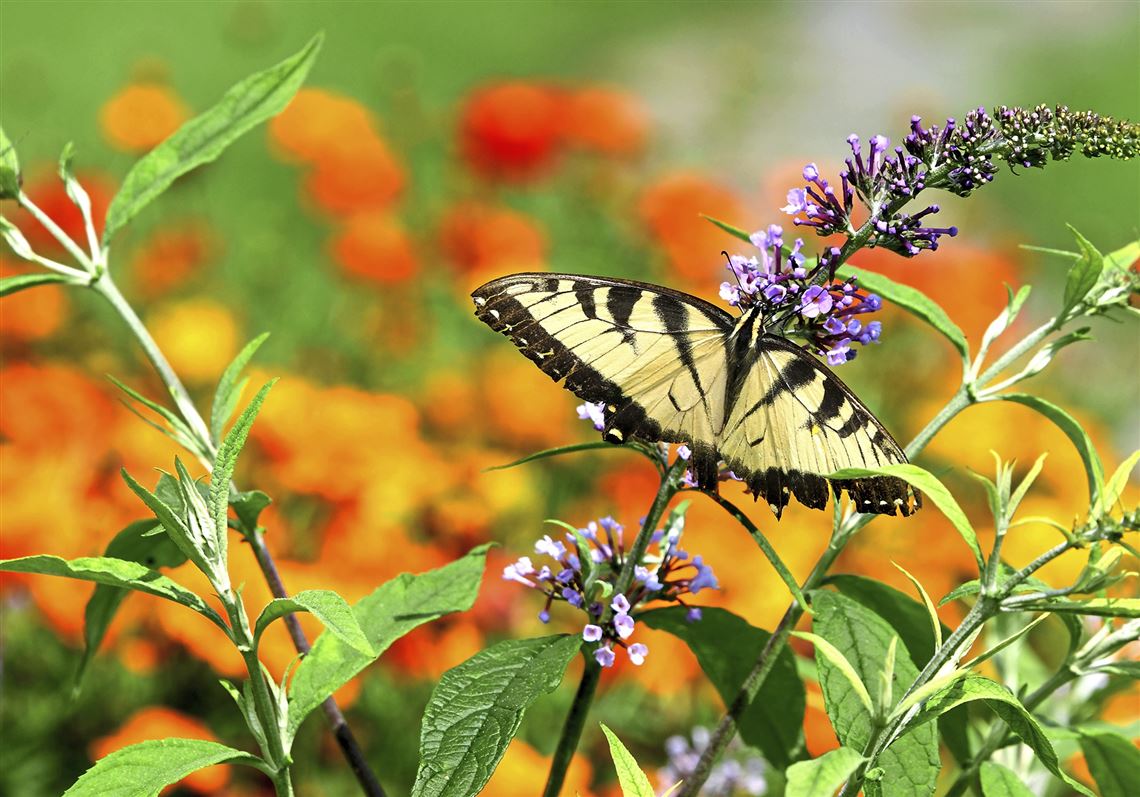As the days get longer and the temperatures head toward freezing, many people put their gardens to bed by clear-cutting all herbaceous material, blowing away every loose leaf and twig and, for those with a patrician garden aesthetic, spreading a nice blanket of manure over each bed.
While such perfection holds great appeal to humans looking out into the garden from the warmth of their homes, pollinators view such a garden less favorably. Doug Tallamy’s seminal book on backyard ecology, “Bringing Nature Home” (Timber Press, $19.95), implores gardeners to think about how their landscapes are viewed by the bugs and birds that rely on plants for survival.
Three-quarters of the world’s flowering plants and one-third of our food supplies depend on pollination and pollinators need plants year-round. The succession of flowers throughout the seasons provide nectar, eggs laid on host plants ensure reproductive survival, and plants and debris left in the garden serve as a safe places for pollinators to overwinter. By planting a variety of native flowers and leaving them to stand in our winter gardens, we greatly add to the diversity and abundance of pollinators.
Do these pollinators a favor and procrastinate on cleaning your flower beds until April. Here are a few of the creatures who would love your “messy” winter garden:
Butterflies and moths
Mourning cloak (Nymphalis antiopa), comma (Polygonia c-album) and question mark (Polygonia interrogationis) butterflies nestle under a piece of bark or dried leaf until spring. These species produce an anti-freezing agent which stops ice crystals forming in their blood if temperatures are below 0 degrees. The aptly named winter moth (Operophtera brumata) is active between November and February and the December moth (Poecilocampa populi) is out even on very cold days in November and December.
Other species overwinter as a chrysalis. These include cabbage white (Pieris rapae), sulphurs (Phoebis spp.) and members of the swallowtail family (Papilionidae). Cercropia moths (Hyalophora cecropia) hibernate in chrysalis form and Hawk moths (Sphingidae) spend the winter in cocoons underground.
Some spend the winter as caterpillars: red-spotted purple (Limenitis arthemis), meadow fritillary (Boloria bellona) and viceroy (Limenitis archippus), which hibernate among vegetation, in seed pods, silken nests and rolled-up leaves. The caterpillars of some species resume feeding during mild spells. Wait until spring to enjoy repeat visits of migrating monarchs (Danaus plexippus), painted ladies (Vanessa cardui) and red admirals (Vanessa atalanta).
Bees
There are over 3,500 species of native bees. Some hide in the hollow stems of bee balm or ornamental grass. Some burrow into the ground. Many don’t live in colonies and pollinate more efficiently than honeybees. They are often overlooked because they do not swarm and are not aggressive.
Varieties of solitary bees include red mason bees (Osmia bicornis), which build their nests in dry hollow stems, walls or holes in wood. They readily use manmade “bee-hotels.” Larvae pupate in late summer and young adults spend autumn and winter in an unanimated state known as diapause inside nest cells. Leaf cutter bees (Megachile willughbiella) and wool carder bees (Anthidium manicatum) are also cavity nesters. Wasps are pollinators, too.
Flies
Hoverflies either hide in the soil as larvae or hibernate as adults in the nooks and crannies of old trees or other sheltered places. Hoverflies that overwinter as adults are the ones you see flying around on the first warm days of spring, searching for aphid-infested plants to lay their eggs on. The larvae of most hoverflies are voracious consumers of these garden pests.
Beetles, ants and midges
There are more than 400 species of ladybug beetles in North America. They feast on aphids and can eat a dozen a day. The native species only winter outside, under rocks, in hollow logs and under leaves. It’s the alien species that get into our homes to overwinter and become pests. Ants and midges are other useful pollinators.
Dianne Machesney is a Penn State Master Gardener. This volunteer program supports the outreach mission of Penn State Extension and provides research-based information on best practices in sustainable horticulture and environmental stewardship. Information: alleghenymg@psu.edu or 412-482-3476.
First Published: October 19, 2018, 12:00 p.m.

















